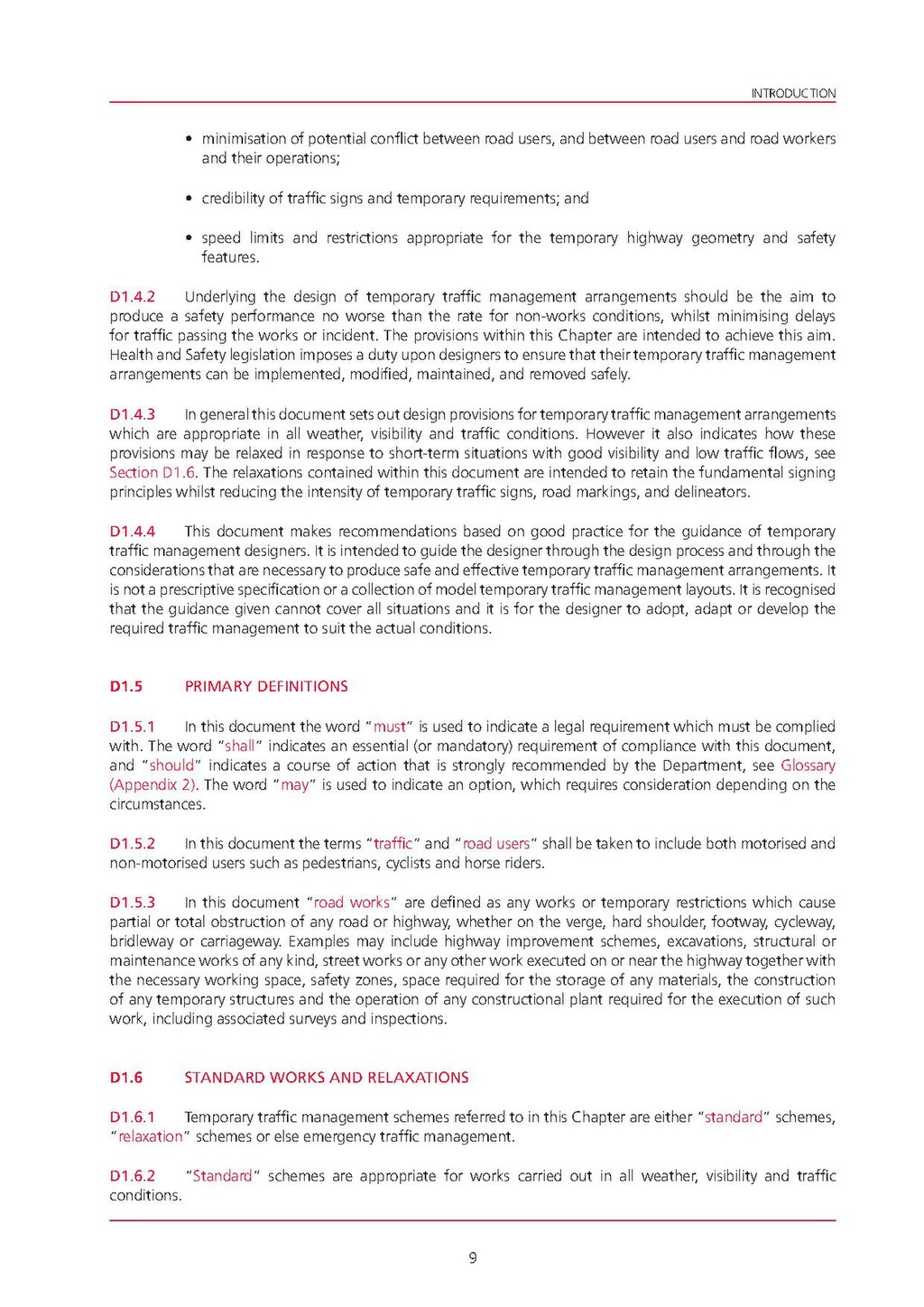- minimisation of potential conflict between road users, and between road users and road workers and their operations;
- credibility of traffic signs and temporary requirements; and
- speed limits and restrictions appropriate for the temporary highway geometry and safety features.
D1.4.2 Underlying the design of temporary traffic management arrangements should be the aim to produce a safety performance no worse than the rate for non-works conditions, whilst minimising delays for traffic passing the works or incident. The provisions within this Chapter are intended to achieve this aim. Health and Safety legislation imposes a duty upon designers to ensure that their temporary traffic management arrangements can be implemented, modified, maintained, and removed safely.
D1.4.3 In general this document sets out design provisions for temporary traffic management arrangements which are appropriate in all weather, visibility and traffic conditions. However it also indicates how these provisions may be relaxed in response to short-term situations with good visibility and low traffic flows, see Section D1.6. The relaxations contained within this document are intended to retain the fundamental signing principles whilst reducing the intensity of temporary traffic signs, road markings, and delineators.
D1.4.4 This document makes recommendations based on good practice for the guidance of temporary traffic management designers. It is intended to guide the designer through the design process and through the considerations that are necessary to produce safe and effective temporary traffic management arrangements. It is not a prescriptive specification or a collection of model temporary traffic management layouts. It is recognised that the guidance given cannot cover all situations and it is for the designer to adopt, adapt or develop the required traffic management to suit the actual conditions.
D1.5PRIMARY DEFINITIONS
D1.5.1 In this document the word "must" is used to indicate a legal requirement which must be complied with. The word "shall" indicates an essential (or mandatory) requirement of compliance with this document, and "should" indicates a course of action that is strongly recommended by the Department, see Glossary (Appendix 2). The word "may" is used to indicate an option, which requires consideration depending on the circumstances.
D1.5.2 In this document the terms "traffic" and "road users" shall be taken to include both motorised and non-motorised users such as pedestrians, cyclists and horse riders.
D1.5.3 In this document "road works" are defined as any works or temporary restrictions which cause partial or total obstruction of any road or highway, whether on the verge, hard shoulder, footway, cycleway, bridleway or carriageway. Examples may include highway improvement schemes, excavations, structural or maintenance works of any kind, street works or any other work executed on or near the highway together with the necessary working space, safety zones, space required for the storage of any materials, the construction of any temporary structures and the operation of any constructional plant required for the execution of such work, including associated surveys and inspections.
D1.6STANDARD WORKS AND RELAXATIONS
D1.6.1 Temporary traffic management schemes referred to in this Chapter are either "standard" schemes, "relaxation" schemes or else emergency traffic management.
D1.6.2 "Standard" schemes are appropriate for works carried out in all weather, visibility and traffic conditions.
9
